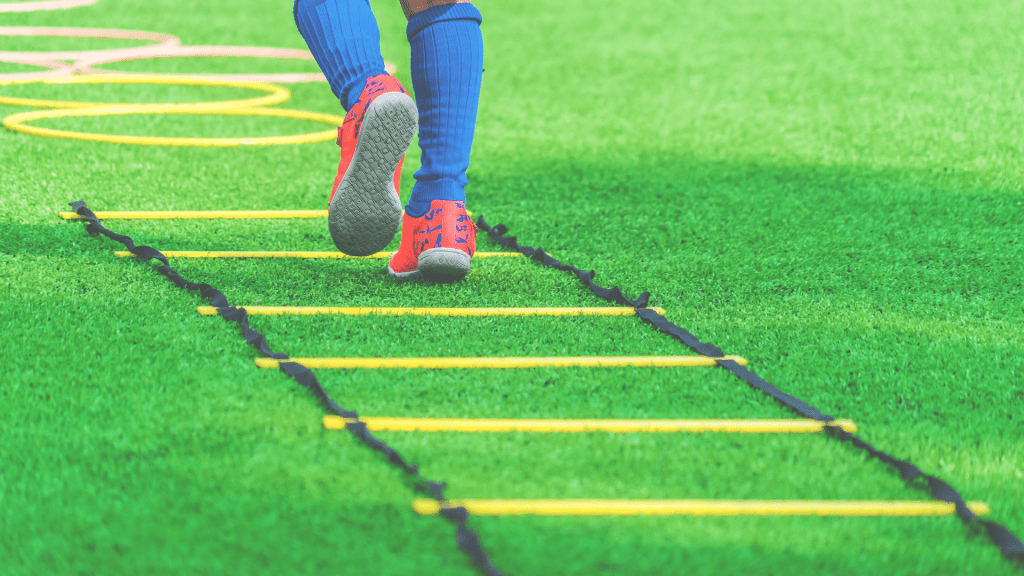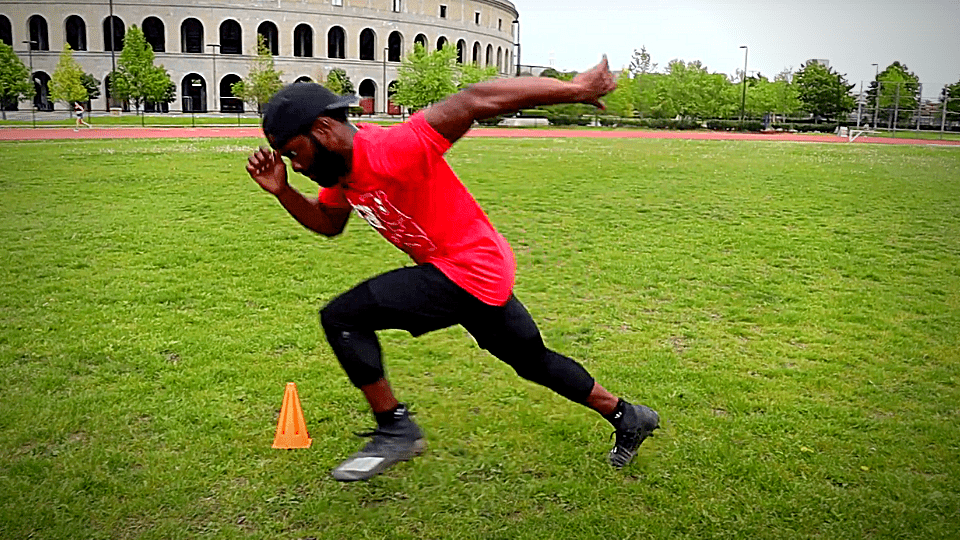In recent years, there has been lots of buzz about agility ladders! Of course, everyone has an opinion, especially as social media posts show off quick feet and fancy tap-dancing routines. And yet coach and athletes alike are still arguing and asking, do agility ladders work?
At PLT4M, we believe in the power of sports performance and want to have open and honest conversations about the different things that go ‘viral.’ Let’s talk agility ladders!
Everyone Wants Agility Ladder Benefits!
One of the most widely used – and misunderstood – athletic training tools is the agility ladder. For years, we have seen athletes of every sport attack the ladder every day in a vain attempt to get faster and more agile.
Everyone wants to try and tap into the benefits of ladder drills, but there is a problem! The problem is, that’s not really what the ladder does. Performing ladder drills won’t improve your speed or agility in the most traditional sense. But does that mean it’s useless? Of course not. Let’s take a quick look at what the agility ladder is and how it can help athletes.
What is an Agility Ladder?
Agility ladder, speed ladder, cardio ladder. No matter what you call this piece of equipment, you know what we are talking about. It’s the collapsable ladder that often makes its way on to countless training sessions and sports performance social media posts!
But what is it?
The problem lies primarily in the name. “Agility Ladder” is a complete misnomer. Agility is an athlete’s ability to stop and start, the culmination of acceleration, deceleration, and change of direction or movement.
Now, imagine the average agility ladder drills – speed and direction are both constant. Worse, we often see athletes approaching ladder routines like a tap dancer – super high hip level, minimal knee bend, and rapid foot movement only. It can look impressive at times, but clearly this has little effect on speed and agility in a way that is relevant to athletics.

How to Use Agility Ladder
That being said, if used correctly, the ladder can still be a useful tool in athletic development. The focus, instead of agility, is really on proprioception – or body control & coordination. Your awareness of your body in space and the ability to control your limbs with precision is not purely a god-given talent. It is a result of neurological connections made between your brain and the muscles in your body over time through practice.
For example, a soccer player doesn’t just wake up one day with the ability to juggle a soccer ball, it takes thousands of hits and misses recorded by the brain to establish a firm, confident connection that allows for complete control.
By working through progressively difficult movement patterns and foot patterns on the ladder, increasing speed as you go, you cement those neurological connections between the brain and your feet. Every great rep, as well as every mistake, brings you closer to supreme control.
What Do Ladder Drills Improve?
So working on agility ladder training with a focus of proprioception does what?
When you can control EXACTLY where your foot will land, with how much force, for how long and in what direction it will move next, you have drastically improved your potential for economy of movement.
Economy of movement means a lack of wasted energy and motion. The less time you take to complete a task, the “faster” you are at it. In this sense, you can absolutely use the ladder to improve your competitive speed and quickness, by becoming smoother and more economical in all of your movement. So, how can you actually develop that speed and agility? By working in the gym!
Speed & Agility – Built In The Gym
When thinking about total athletic performance, strength training is the type of training we should be talking about! Let’s break down speed & agility, power, proprioception, and conditioning.
Speed & Agility.
These days, they are the ultimate buzzwords in athletics and performance training. Every coach wants faster athletes, every athlete wants better sprint speed, and every trainer claims he/she has the drills that will drastically improve your speed and agility on the field of competition.
Look, don’t get us wrong, top-end speed, reaction time, and the ability the change direction quickly is important in athletics. That being said, the perception of training these abilities has become drastically skewed. Everywhere you turn, you see elaborate cone drills, ladder exercises, and “speed” drills. Here’s the problem, training the Pro-Agility drill every week will only make your athletes better at the Pro-Agility drill.
The relevant aspects of speed and agility to competitive athletics, in regards to training, are much more compartmentalized. Athletes benefit from the ability to accelerate or decelerate quickly & efficiently, change direction with ease & precision, and maintain peak power & force production over the course of whatever time domain their play lasts. So, how should you go about improving these elements?
Power
First, we must develop the athlete’s maximal power output. Moving faster is a result of generating force into the ground by lower body musculature via the foot. Power is, by definition, a combination of strength and speed as it relates to muscle contraction. So, we first work to build basic strength through compound movements like the back squat and some simple linear periodization.
We simultaneously train high velocity movements such as various plyometrics and lighter weight olympic lifts to cultivate explosiveness. The resulting combination is a greater ability to generate force at high velocities. This enables an athlete to accelerate and decelerate faster, as well as improve top-end speed.
Fresh Sample Conten! Let’s look at a PLT4M plyo drill like the snapdown!
Proprioception
Next we must spend a good deal of time working on athlete’s proprioception, or body control. To start, we work this by introducing complex compound “strength” movements in the gym (think overhead squatting, pistol squats, or toes to bar, etc) to promote strength and control through full ranges of motion. Then we incorporate more coordination-based exercises (think jump rope progressions and agility ladder work) to cement the neural connections between brain and limbs for fast, repeated movement. In total we have a stronger, more precise sense of body control. Such enhanced coordination allows athletes the chance at better economy of movement. Any athletic coach knows mechanics are everything. Wasted, rushed, and sloppy movement are a bigger determinant of “speed and agility” than anything else with young athletes. (*Though we do not go into it here, proper running mechanics obviously also play a large role for the same reason. In this instance, speed coaches can be very beneficial for athletes with poor mechanics.)
Conditioning
Lastly, we mustn’t neglect conditioning. Many people wrongly separate speed from conditioning. Top-end speed is great, but if you cannot replicate your maximal force production or maintain body control beyond a single effort – your “speed” is effectively useless. You’re only as fast as you can run repeatedly, especially when fatigued. To make sure our performance lasts, we develop all 3 metabolic energy pathways through numerous different approaches.
We do it all: from finishers promoting muscular endurance and strength at high heart rate, to shuttle runs of varying distance to develop anaerobic conditioning and change of direction, to classical aerobic conditioning to increase lasting power. The true goal, is to develop an athlete that can see results on the field, not just in a 40 time or Pro-Agility drill. We only have so much time with our athletes, make the most of it by training speed & agility in the gym!
FAQ
Does PLT4M offer training programs?
Yes, PLT4M has a variety of training programs for in-season and off-season athletes.
PLT4M is the complete training tool for high school athletes. There are programs for every fitness level, from bodyweight exercises to full-blown strength and conditioning sessions.
Do you have any examples of your athletic performance training videos?
Yes, check out our speed and agility specialist Ricky Igbani’s breakdown of a dynamic warmup to do on the track or field.






